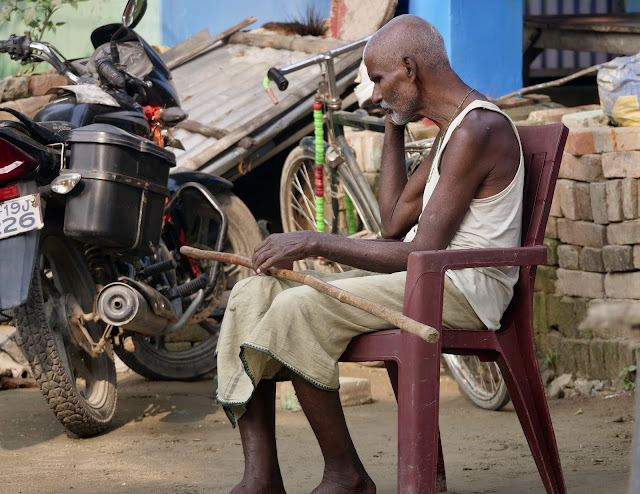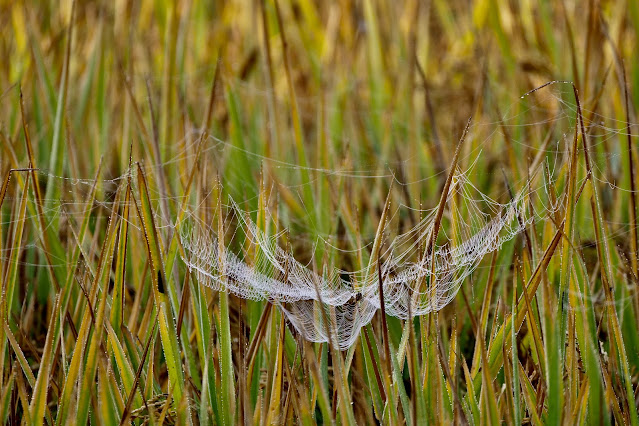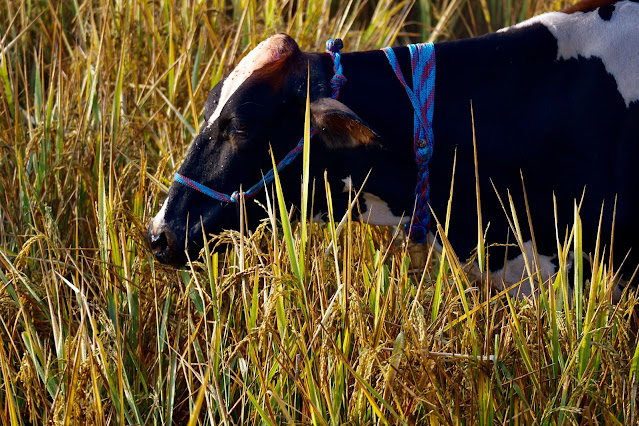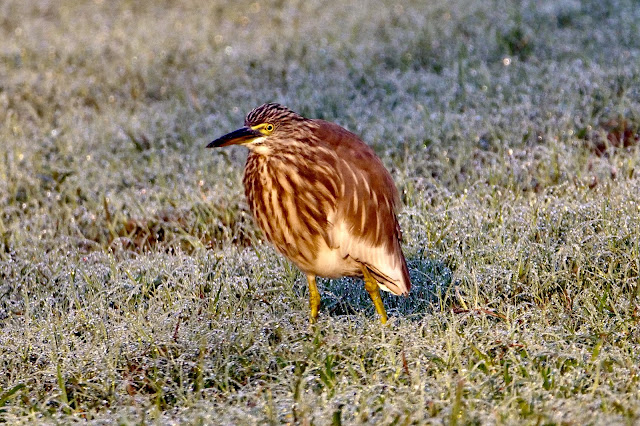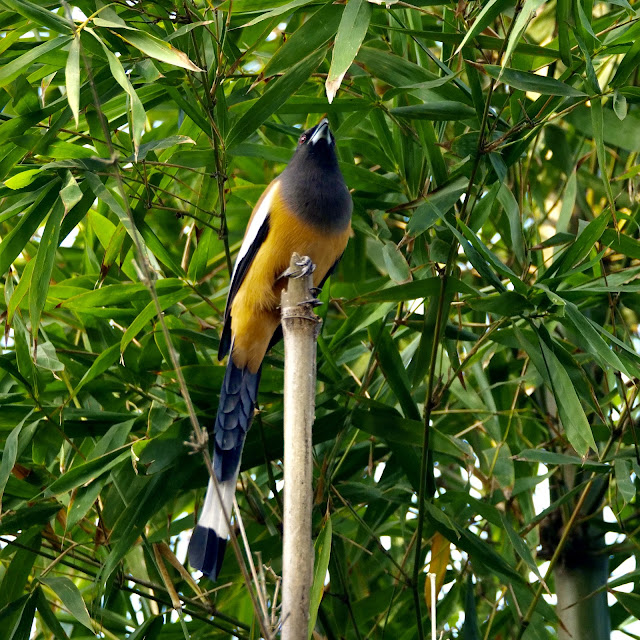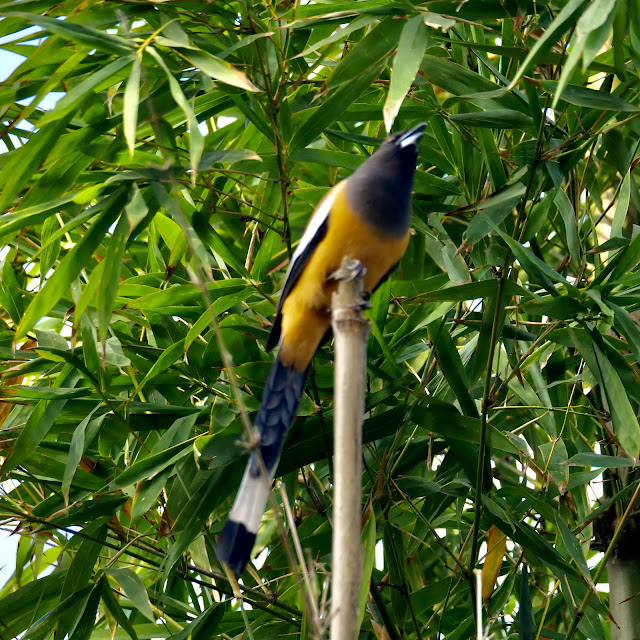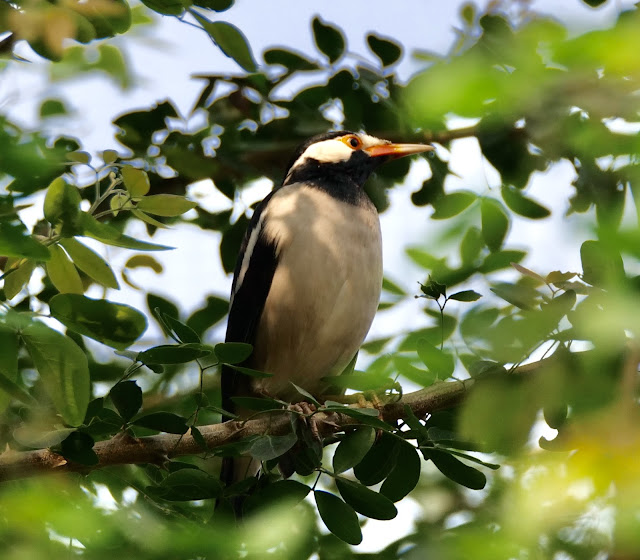I was walking back after a surprising spotting of an Indian Pied Mina in a village !
For a week I was visiting this village early in the morning to watch bird arrivals in the harvested field. On all the days I returned around the same time.
I noticed an elderly person carrying a container and walking pass me on every day. It aroused an interest in me to follow him on one day. I thought he might be carrying milk from his home to the local diary centre.
But he passed by that centre and went on. At the end of about two kilometres, he turned into a narrow lane leading to a village. I differed going into the village with my camera, as it might arouse suspicion about my presence in the village.
I stopped at the corner tea shop, where two other people were sipping their tea and eating hot samosa just taken out from the frying pan. I ordered for tea and samosa. While I was waiting to be served, I heard one of the men asking the other person as to who was the person walking towards the village with a container to the village. The other person had a long story to narrate.
I sat on a stool and turning to the other direction but my ears were attentive towards the conversation. One of them knew this person well as he and this man had a jointly owned a cloth shop twenty years back. There was dispute between them and they separated. Since then, he tried inviting him back to restore the joint ownership, but his attempts failed. Grieved by the few things this man did to his former partner, about which he regretted later, he leaves a packet of money once a month in his house unknown to his former partner, to pay back what was due to him.
But this man with a container in his hand was on another mission. He visits an elderly man who lives alone in the village and takes for him cooked food each day in the morning. He has an arrangement with one of his friends to carry food to that senior citizen when he goes out of station.
He goes out of station to visit few other senior citizens in distant villages, who also receive a meal each day delivered by local restaurants. During his monthly outings to five other villages, he makes advance payments to the restaurants for the delivery of food to senior citizens.
Since the partnership separated, he picked up tailoring and stitches cloth bags for grocery shopping and sells them in the villages. He gets pieces of cloth, which the shop keepers sell at reduced price as they are bits left over after the sale. Some shop keepers give him those bits free because of his generosity towards others.
This person lost his wife at thirty years of age due to a prolonged illness. His two children were married in distant villages who are not proactive towards him.
From the conversation between those two in the tea shop, I overheard that this man lived an austere life in a thatched shed. He looks out for senior citizens who live alone and tries to provide one meal for them, each day. The local restaurants who provide the meal do so at a concessional rate. There were two others in the village, who by seeing what this man was doing to care for others, now engage in different acts of kindness towards others.
The two people during the conversation referred to the natural habit of this Good Samaritan, to help people when they are sick.
During this fifteen minutes, when I overheard the conversation, till more people came to the tea shop, I wondered whether I was listening to a fiction or a true story of a generous man, who lives from his meagre income!
When these two men left the tea shop, I too left. They were walking in the same direction that I was to go. I walked behind them wondering whether I would have an opportunity to know about their background. One of them who owned a cloth shop on reaching his shop opened the shop. It was a square room of about 15 feet, where the dress materials for children and adults were available. His other companion ran a cycle shop next to the cloth shop.
They were both small entrepreneurs. I wondered how the owner of the cloth shop would earn enough to give a gift to the Good Samaritan regularly to fulfil his moral obligation towards his former partner! To me both of them were men with an unusual spirit of altruism.
It is those who do not have enough to live on, therefore made to live austerely, are often, who are thoughtful towards others and mindful of their needs.
Anna and I received an invitation to visit the house of a domestic helper, while visiting a hospital recently, who with her two children live in difficult circumstances but with cheerfulness that surprised us. The travails of life are upon them, but they communicated a spirit of hope and anticipation about future.
This inner composure and kindness, while living with limited facilities and income, instead of complaining or reactive attitude surprised me. What I experienced was kindness beyond imagination.
Jesus of Nazareth observed how people put their offerings in the treasury of the synagogue. The rich put large amounts out of their abundance of possessions. But Jesus noticed a poor widow putting two copper coins. Jesus commenting about this to those who were His followers told: '...this poor widow, put in more than all the other contributors to the treasury, for they all put in out of surplus, but she, out of her poverty, put in all she owned, all she had to live on (Mark 12:43-44).
This is the spirit seen in many who are materially poor. They feel hunger, deprivation, sorrow and loss. They know how these experiences hurt and disturb life is a personal reality close to them. Therefore it is easier for them to be more self giving.
A boy while given a new geometry box after waiting for a few months, responded to his mother, 'Now can I give my old geometry box to my friend'! He hailed from a family where his father is on treatment for renal disease, and grandmother is bed ridden. The mother works in two houses as a domestic worker to earn for the family.
It is important to celebrate the birth of a new consciousness of the needs of others, when one is made to live in a disadvantaged situation.
When I returned home, I asked myself, 'When was the last time I went out of my way to think of the needs of others and did something to share from my resources'!
It was an exceptional experience to overhear the story of a man, who built back his life to a missionary vocation of mindfulness, after loosing his partnership in the cloth shop and his own wife!
I remembered how the Indian Pied mina was tunefully giving away its bird calls!
To give away something would often mean drawing near to people in a loving manner!
M.C.Mathew(text and photo)











